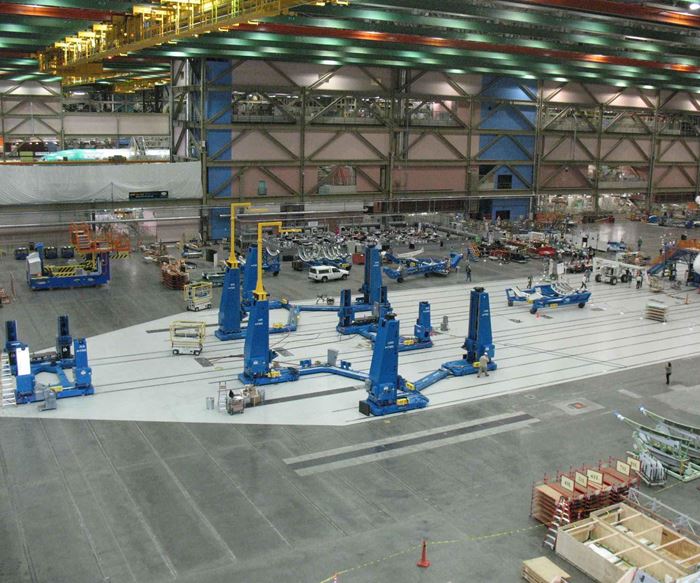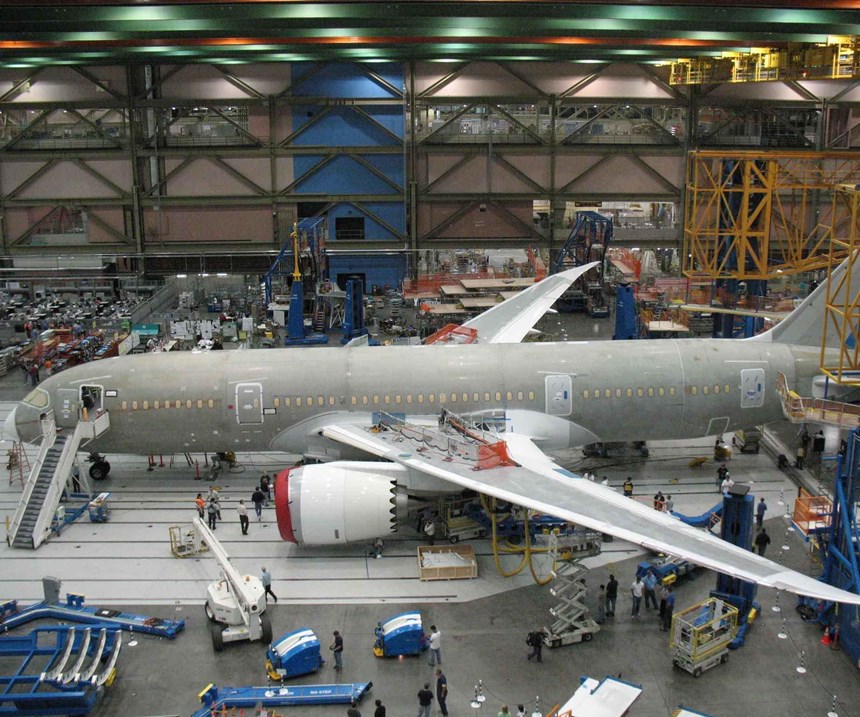Boeing 787 assembly aided by automated positioning/joining
Massive composite components mated via motion control software.
Advanced Integration Technology (AIT, Plano, TX, US) is a 20-year supplier of turnkey industrial automation systems for aerospace. The company is known for complex, fully integrated manufacturing, tooling and assembly systems for commercial and military aircraft. AIT has worked with all of the major aircraft OEMs, including The Boeing Co. (Chicago, IL, US), for which it designed and built a fully automated positioning and joining system for the major composite fuselage components of the Boeing 787 Dreamliner, within a moving production line.
Key to these automated assembly solutions was control and coordination of their motions, and Boeing required that comprehensive safety technology be incorporated into the automated systems as well. AIT president Ed Chalupa says that the company looked for an automation and motion-control solution that could deliver a robust — and safe — assembly process to Boeing, along with training and comprehensive engineering and technical support. After an extensive review of several global contenders, Siemens Industry Inc. Motion Control (Elk Grove Village, IL, US) was selected to supply the control system components.
Two complete assembly systems and one positioning system were ultimately provided to Boeing. Together, they were able to join Section 41 (the forward fuselage), Sections 47/48 (the aft fuselage) and Section 12 (the left- and right-side wings) to the mid-fuselage of the 787 airframe.
The motion control system employed is a Siemens SIMOTION D motion controller, running on a Profinet network (a standard industrial Ethernet originally developed by Siemens). Fourteen SIMOTION motion controllers are mounted to transport structures, which lift and move the aircraft sections with the help of what are called cradle dollies (see photo below). The transport structures can move either independently or interlocked with each other and indexed to electronic markers on the factory floor, depending on instructions from the Siemens’ motion controllers and drives.
Real-time positioning measurement data are logged with an integrated, indoor global positioning system (GPS), to locate and position the airplane sections. With those data points, the system calculates how much each section (nose, tail, left and right wings) needs to be moved, in all axes, to ensure an exact fit to the section to which it is about to be joined.
The system includes a Siemens-engineered, simplified fail-safe safety and control protocol, trademarked PROFIsafe, which meets all relevant safety requirements. The system has resulted in more flexible, responsive operations for AIT and its customer, Boeing, than can be conducted with hand-controlled forklifts and fixturing equipment, thanks to the substantial reduction in engineering, hardware, training and spare parts needed. Physical barriers and light curtains separate personnel from danger, and any problems discovered during assembly troubleshooting reportedly can be resolved quickly, which means reduced downtime on the floor, ultimately ensuring a smooth and rapid build of each aircraft’s composite fuselage.
Related Content
-
New online training course targets prepreg basics
JEC World 2024: Composites Expert highlights how its E-Learning Composites Academy platform supports flexible industry learning with new courses developed with Stelia Aerospace North America.
-
Zeiss, Imperial College London summer school enhances materials, sustainability learning
Twenty-four next-generation students attended the Imperial College London this August to advance their scientific knowledge, with workshops, lectures, activities and a composites competition.
-
Chemnitz University of Technology receives €6 million to expand research into "green" carbon fiber
Carbon LabFactory and InnoCarbEnergy project conduct R&D across entire value chain from raw materials through processes to structures and systems on a pilot line with technology demonstrators.


















